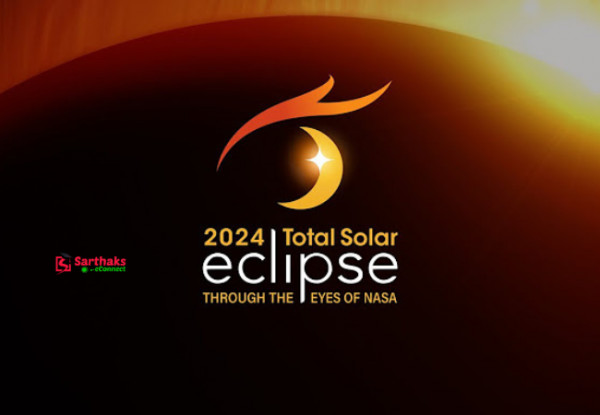
The 2024 solar eclipse, which traversed North America, sparked a variety of NASA-supported research projects examining its effects on the Sun’s corona, Earth’s atmosphere, and radio communications. Significant data was gathered through diverse methods, including ground-based telescopes, aircraft, amateur radio transmissions, and student-launched high-altitude balloons.
On April 8, 2024, the total solar eclipse crossed from Mexico’s western coast to northeastern Canada. To better understand the eclipse’s impact on Earth and the Sun, NASA funded numerous projects and enlisted citizen scientists. These efforts aimed to explore how the Sun interacts with our planet, particularly focusing on atmospheric and radio communication disruptions caused by the eclipse.
At a press briefing on December 10, NASA scientists shared initial findings from several eclipse-related studies. Kelly Korreck, NASA’s eclipse program manager, emphasized the crucial role of scientists and volunteer observers in gathering valuable data during the event. "Their efforts were a key part of the Heliophysics Big Year, helping us learn more about the Sun’s effects on Earth’s atmosphere when its light briefly vanished," Korreck said.
One of the major projects, Citizen CATE 2024 (Continental-America Telescopic Eclipse), deployed 35 teams from Texas to Maine to capture images of the Sun’s outer atmosphere, or corona, during totality. Despite some challenges with cloud cover, the teams successfully collected over 47,000 images in polarized light. These images will help scientists gain a better understanding of the processes shaping the corona. Sarah Kovac, CATE project manager, described the effort as a blend of professional science and community involvement, making the project a true collaborative achievement.
In the sky, NASA’s WB-57 aircraft chased the eclipse’s shadow at 50,000 feet, extending their time in totality. Equipped with cameras and spectrometers to study the corona, the aircraft successfully gathered detailed data, despite some issues with vibrations affecting camera images. These results have scientists eager to conduct similar experiments in future eclipses.
Amateur radio operators also contributed valuable data through the Ham Radio Science Citizen Investigation (HamSCI). Over 6,350 participants generated more than 52 million data points, studying how the sudden loss of sunlight affected radio signals and the ionosphere. Findings indicated changes in radio communications, with some frequencies improving and others deteriorating during the eclipse.
In addition, the Nationwide Eclipse Ballooning Project involved over 800 students who launched weather balloons into the eclipse’s path to study atmospheric responses. This research revealed atmospheric gravity waves, similar to waves on a lake, formed by the cooling and darkening effects of the eclipse. These findings support the idea that eclipses cause disturbances in the atmosphere’s tropopause, similar to effects seen during sunset.
Through these diverse projects, the 2024 solar eclipse has proven to be a rich source of scientific discovery, providing critical insights into solar and atmospheric phenomena.